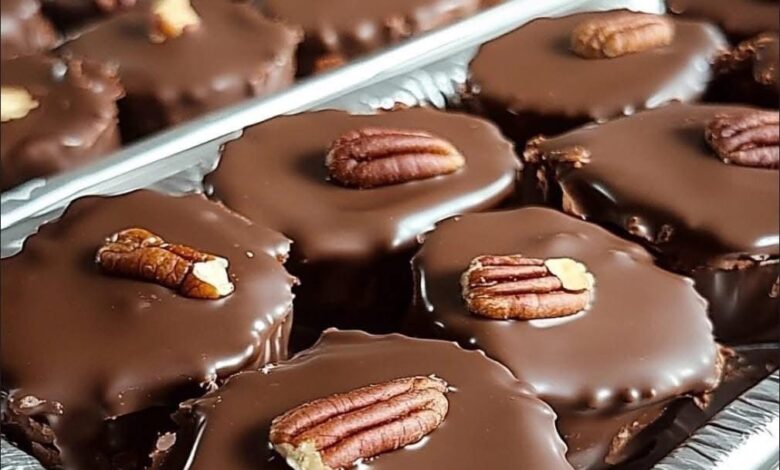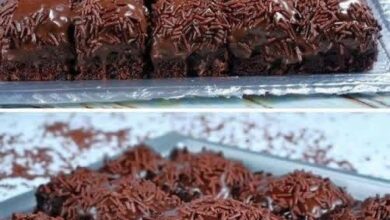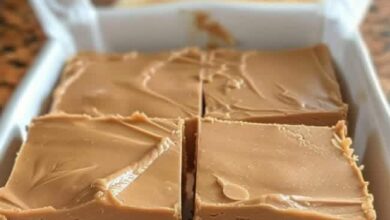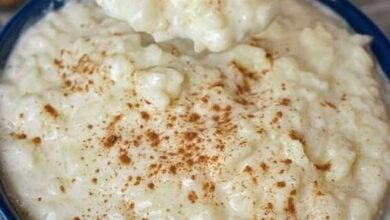Chocolate-Covered Pecan Caramel Turtles

Introduction – Why These Are Worth Every Minute
Imagine biting through a shiny, perfectly tempered dark-chocolate dome into buttery, chewy, sea-salt-kissed caramel that slowly gives way to the deep nutty crunch of toasted pecans. That moment of contrast (crack, pull, crunch) is the reason these candies have been adored for over a century.
Commercial “Turtles” are good. Homemade ones are legendary.
This is the big, indulgent, gift-worthy, “people will fight over the last one” recipe you’ve been looking for. It makes 50–60 generous pieces (about 25–30 g each), enough to fill three large holiday tins or to keep your freezer secretly stocked for months. The recipe is written for confidence: every tip, trick, temperature, and timing is here so you succeed on the first try.
A Delicious History
1916 – Chicago. Johnson’s Candy Kitchen accidentally drips caramel over clusters of pecans, coats them in chocolate, and an employee jokes, “It looks like a turtle!” The name sticks.
1923 – DeMets Candy Company trademarks “Turtles.”
1930s–60s – The candy becomes a national sensation, sold in movie theaters and five-and-dime stores.
1968 – Nestlé acquires the brand.
Today – Artisanal chocolatiers and home cooks agree: the homemade version, made with real butter, fresh cream, and single-origin chocolate, is infinitely superior.
Real Benefits (Because Yes, Chocolate Can Be Good for You)
- Pecans are the #2 most antioxidant-rich tree nut (after walnuts). They’re loaded with oleic acid (the same heart-healthy fat in olive oil), vitamin E, magnesium, and fiber.
- Quality dark chocolate (65–75% cacao) contains flavanols that improve endothelial function, lower blood pressure, and boost mood via phenylethylamine and serotonin pathways.
- A single homemade turtle has roughly the same calories as a commercial candy bar but far superior ingredients and no preservatives.
- The healthy fats from pecans + cream slow sugar absorption, preventing the spike-crash of cheap candy.
Ingredients – Full Big Batch (50–60 pieces)
Pecans
- 450 g (4½ cups) highest-quality pecan halves (400 g for clusters + 50–60 perfect halves reserved for tops)
Soft, Chewy Caramel Layer
- 400 g (2 cups) granulated white sugar
- 180 g (½ cup + 1 Tbsp) light corn syrup OR glucose syrup (prevents crystallization)
- 120 ml (½ cup) water
- 360 ml (1½ cups) heavy cream (minimum 35% fat), room temperature
- 115 g (1 stick / ½ cup) unsalted butter, cubed, room temperature
- 1½ teaspoons fine sea salt (or 2 tsp for pronounced salted-caramel flavor)
- 2 teaspoons pure vanilla extract or 1 vanilla bean, scraped
Chocolate Coating
- 1 kg (2.2 lbs) best dark chocolate you can afford (64–72% cacao recommended)
OR 900 g milk chocolate + 100 g dark for richer flavor - 2–3 Tbsp neutral oil (refined coconut, grapeseed, or vegetable) – optional but makes dipping flawless
Equipment You’ll Need
- Heavy-bottomed 3–4 L saucepan
- Candy thermometer or instant-read
- Silicone spatulaheet or parchment-lined 45×33 cm (half-sheet) pans
- Small cookie scoop (2-tsp size)
- Dipping fork or regular fork
- Optional: acetate sheets for ultra-glossy finish
Complete Step-by-Step Method (Read First, Then Cook)
Stage 1 – Toast the Pecans (15 min)
- Preheat oven to 175 °C (350 °F).
- Spread all 450 g pecans on a baking tray.
- Toast 8–11 minutes until fragrant and one shade darker. Do NOT burn.
- Cool completely. Pick out the 55–60 most perfect, unblemished halves for topping. Roughly chop the rest or leave whole for clusters.
Stage 2 – Make the Caramel (30–40 min active)
- Line two half-sheet pans with silicone mats or parchment. Lightly spray with oil.
- In a tall, heavy 3–4 L saucepan, combine sugar, corn syrup/glucose, and water. Stir just until sugar is wet.
- Wash down sides of pan with a wet pastry brush to prevent crystals.
- Place over medium-high heat. NO MORE STIRRING from this point.
- Cook until the mixture turns deep golden amber (160–165 °C / 320–330 °F on candy thermometer). This takes 10–15 minutes. Swirl pan gently if needed.
- Meanwhile, warm the cream in microwave until hot but not boiling.
- When caramel reaches color, immediately remove from heat.
- Very slowly drizzle in warm cream while whisking constantly (it will bubble furiously).
- Add cubed butter a few pieces at a time, whisking until smooth.
- Return to medium heat and insert thermometer. Cook, stirring slowly, to 118–120 °C (244–248 °F) for soft-chewy caramel (perfect for turtles).
- Remove from heat. Stir in salt and vanilla.
- Let cool 5 minutes, then pour into prepared pans to a depth of about 6–7 mm (¼ inch). It will set as it cools.
Stage 3 – Shape the Bases (20 min)
- When caramel is firm but still slightly warm and pliable (about 25–35 °C / 80–95 °F, roughly 45–60 minutes cooling), use a hot knife or greased cookie cutter to cut into rounds, OR simply scoop with a 2-teaspoon scoop and roll into balls, then flatten slightly into 3–4 cm (1¼–1½ inch) disks.
Alternative easier method: Drop 2-teaspoon mounds directly onto silicone, flatten lightly with oiled fingers. - Press 4–5 pecan pieces (or one whole) into the base of each caramel disk in a “turtle legs + head” pattern.
- Chill 15 minutes to firm up.
Stage 4 – Temper the Chocolate (or Cheat Temper)
Proper Tempering (shiniest, snappiest results)
- Chop 1 kg chocolate finely.
- Melt 750 g in a bowl over barely simmering water to exactly 45–48 °C (115–118 °F).
- Remove from heat. Add remaining 250 g seed chocolate. Stir constantly until temperature drops to 27–28 °C (81–82 °F).
- Gently re-warm to working temperature:
- Dark: 31–32 °C (88–90 °F)
- Milk: 29–30 °C (84–86 °F)
Quick “Cheater” Method (still excellent)
Melt 900 g chocolate + 100 g cocoa butter OR 2–3 Tbsp neutral oil to 40–42 °C. Use immediately. It won’t have perfect snap but looks gorgeous and stays glossy.
Stage 5 – Dip the Turtles
- Drop one caramel-pecan base into the chocolate.
- Use a dipping fork to flip and coat completely.
- Lift out, tap firmly on the bowl edge to remove excess.
- Slide onto clean parchment or acetate.
- Immediately place one perfect pecan half on top, pressing lightly.
- Repeat. Work in batches if chocolate cools.
- Let set at cool room temperature (18–20 °C) for best gloss. If in a hurry, refrigerate 10 minutes only.
Stage 6 – Final Cure & Storage
Let turtles cure 4–6 hours at cool room temperature. They will develop the most beautiful sheen. Store in airtight containers:
- Room temp: 2–3 weeks
- Refrigerator: 6 weeks
- Freezer: 6–12 months (and they taste incredible straight from frozen!)
Nutrition Information (per large 28 g turtle, approx.)
- Calories: 165 kcal
- Fat: 12 g (mostly healthy monounsaturated)
- Carbohydrates: 15 g
- Protein: 1.5 g
- Fiber: 1.5 g
- Key micronutrients: Magnesium 10 % DV, Vitamin E 6 % DV, Antioxidants from cacao
Conclusion – You Just Made Candy-Store Magic
You now hold the power to create one of the most beloved candies in the world, and yours are better: deeper caramel flavor, perfectly toasted pecans, glossy chocolate that snaps when you bite. Wrap them in gold foil cups, stack them in clear boxes with ribbon, or hoard them in your freezer for 3 a.m. emergencies. Either way, congratulations. You’ve just become the most popular person at every holiday party.
For the Lovers
If you really want to send someone over the edge:
- Drizzle with extra tempered chocolate in zig-zags.
- Sprinkle fleur de sel on the wet chocolate.
- Roll the sides in finely crushed toasted pecans.
- Make a “double decker” version with two layers of caramel.
- Swap half the pecans for toasted hazelnuts or almonds for variety packs.



